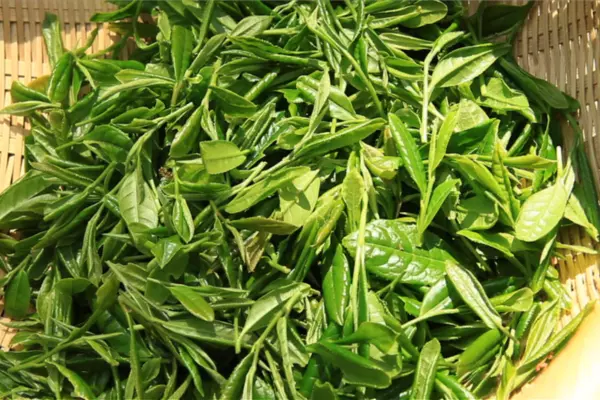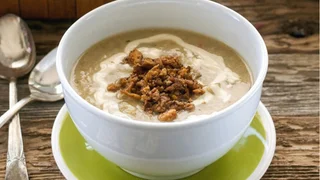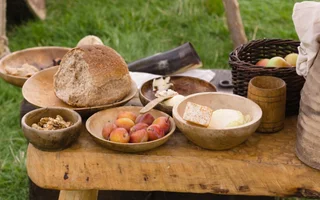Tea has been a popular beverage for centuries and is consumed all over the world.
While we often talk about different types of teas and their flavors, we rarely discuss the process of refining tea leaves.
In this article, we will delve into the journey of tea leaves from harvesting to brewing. We will look at the steps involved in refining tea leaves and the factors that impact the flavor and quality of tea.
How Is Tea Leaves Refined: From Harvesting To Brewing
Harvesting Tea Leaves
The refining process starts with the harvesting of tea leaves. The leaves are hand-picked or machine-harvested, depending on the type of tea and the location where it is grown.
Hand-picking is a labor-intensive process but allows for a more precise selection of leaves. On the other hand, machine harvesting is faster but can result in damaged leaves.
Withering
After the tea is harvested, the leaves are spread out and allowed to wilt in a withering room.
The leaves can lose some of their wetness during this procedure, becoming more malleable and simpler to roll later.
The type of tea and desired flavor profile determine how long the withering process lasts.
Rolling
After the withering process, the leaves are rolled to release their natural oils and flavors. Rolling also helps to shape the leaves and remove any excess moisture.
Rolling can be done by hand or machine, and the intensity and duration of rolling depend on the type of tea and the desired flavor.
Fermentation
Fermentation is a crucial step in refining tea leaves. During this process, the tea leaves are left to oxidize, resulting in a change in color and flavor.
Fermentation is controlled by varying the temperature and humidity levels in the fermentation room. The duration of fermentation depends on the type of tea and the desired flavor.
Drying
After fermentation, the tea leaves are dried to halt the oxidation process and reduce moisture content.
Drying can be done by air drying or roasting. Air drying is a slower process and results in a lighter flavor, while roasting is faster and results in a stronger, smokier flavor.
Sorting And Grading
Once the tea leaves are dried, they are sorted and graded based on their quality and size.
Sorting involves separating the leaves based on their size and shape, while grading involves assessing the flavor and aroma of the tea leaves.
The grading system varies depending on the country of origin and the type of tea.
Packaging And Storage
After sorting and grading, the tea leaves are packaged and stored in airtight containers to preserve their flavor and aroma.
The packaging material used depends on the type of tea and the desired shelf life.

Quality Factors Of Tea Leaves
The environment in which tea leaves are cultivated, how they are harvested, and how they are refined are some of the variables that affect the quality of tea leaves.
Tea leaves grown in higher altitudes and cooler temperatures are generally considered of higher quality as they have a slower growth rate, resulting in a richer flavor.
Hand-picked tea leaves are also considered of higher quality as they are carefully selected and have fewer broken leaves.
Impact Of Refining On Tea Flavor
The refining process has a significant impact on the flavor and aroma of tea. The level of oxidation and the duration of each refining step determine the strength and complexity of the flavor.
For example, green tea is lightly oxidized and has a delicate flavor, while black tea is fully oxidized and has a robust, full-bodied flavor.
Different Types Of Tea
There are several types of tea, each with a unique flavor and aroma. Some of the most popular types of tea include:
- Green Tea: Made from unoxidized leaves and has a delicate flavor and aroma.
- Black Tea: Fully oxidized and has a strong, robust flavor.
- Oolong Tea: Partially oxidized and has a complex, floral flavor.
- White Tea: Made from young leaves and buds and has a light, delicate flavor.
- Pu-erh Tea: Aged tea that has a rich, earthy flavor.
Brewing Tea
Tea brewing is a type of art in and of itself, with many variables that affect the taste and aroma of the finished product.
The strength and flavor of the tea are influenced by the water’s temperature, the length of the steeping process, and the quantity of tea utilized.
Green tea is often prepared with water that is slightly below boiling for 1-2 minutes, while black tea is typically boiled with boiling water for 3–5 minutes.
Conclusion
Each step in the multi-part process of refining tea leaves affects the flavor and aroma of the finished beverage. The environment in which tea leaves are cultivated and the method of refining rely on the quality of the leaves.
Understanding the refining process and its impact on tea flavor can help tea lovers appreciate and enjoy their favorite beverage even more.
- Jet’s Ranch Recipe: Make The Famous Dip At Home - April 12, 2025
- James Hemings Macaroni And Cheese Recipe – History On A Plate - April 3, 2025
- French Dip Squares Recipe – Better Than A Sandwich! - March 25, 2025


